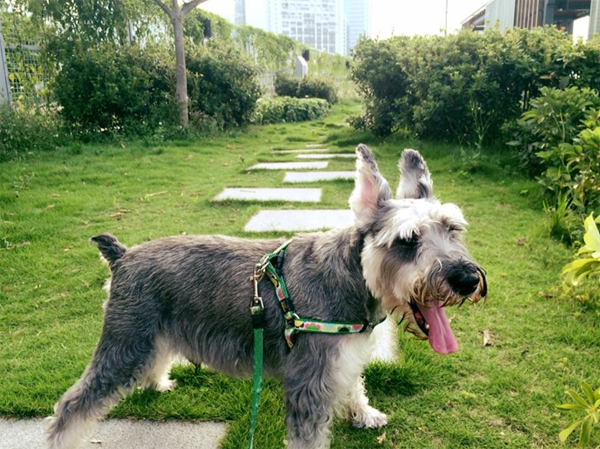How to practically apply discourse analysis in real life: Communicating with veterinarians
Anson Chan (BA HKU)
Email: ansonchan94@gmail.com
The School of English at HKU offers a diverse range of courses related to English linguistics and literature. The thing I like most about the undergraduate curriculum is that it recognises the importance of viewing English in a global and interdisciplinary context and provides multidisciplinary courses such as language and law, language and healthcare, and language and religion. This is transferable knowledge that can be used in other scholarly discourses and the study of other languages. My four years at SoE have changed my way of seeing the world and have enabled me to think critically about the role of language in society, especially the ways in which power, identity, and stereotypes are constructed discursively. Earlier this year, my dog was diagnosed with intervertebral disc disease and now requires regular visits to veterinarians in several animal hospitals. Since then, I have been extremely surprised by how dynamic and complicated the discourse in the veterinary setting can be. I attribute this small but interesting discovery to my training in discourse analysis and ethnography at SoE.

In Hong Kong, there seems to be a common pattern of veterinary consultation amongst the practitioners. Structurally speaking, at least nine phases are usually involved in a veterinary discourse. First, a booking, often over the phone, has to be made in which pet owners will briefly describe to a veterinary nurse what has happened to their pets. The veterinary nurse will take notes and check if the veterinarians are available for consultation. Second, the pet owners will meet the veterinarian and inform him in detail of the symptoms. The interactional dimension is interesting here. In Hong Kong, a lot of the veterinarians are non-Chinese/Cantonese speakers because of the lack of local training institutions. Local veterinary nurses always play the role of an interpreter. However, since they have not had in-depth training in translation and some pet owners may use colloquial and layman biological terms or Chinese cultural terms that are difficult to translate, they may hesitate a lot and alter some of the meaning in their interpretation. In addition, they often ask questions that are not asked by the veterinarians or ask follow-up questions after the pet owners have given answers to the questions that are asked by the veterinarians. From my personal experience, I once helped a verterinarian with the interpretation but he did not seem to know that he needed to stop talking to allow me to do my job. My interpretation was very incomplete not because I did not know the English words but because I did not have the verterinarian knowledge and I was not allowed to take notes. A friend of mine, who is a veterinary nurse, told me that she could not translate every single word spoken by the veterinarians but she would try to understand the general ideas and use her veterinary knowledge to fill in the gaps. The role these nurses play may be more important and diverse than is initially thought because they are the communication bridge between the pet owners and the veterinarians.
Third, a preliminary diagnosis will be carried out. The veterinarian will attempt to explain what may have happened to the pet. Again, the nurses, who are supposed to play the role of an interpreter, may add their own opinion in Chinese without the veterinarians knowing it. This is followed by suggestions of treatments or further screening. The veterinarian may suggest that further testing or screening is needed either to confirm their diagnosis or to ensure that the pet can endure the side-effects and strength of the medication. This phase is often where the tension between pet owners and veterinarians arises. Evident from many online forums, such as the famous HK Golden and Discuss, many pet owners have the perception that the veterinarians have vested financial interest in prescribing expensive but unnecessary screening, testing, or treatments because the consultation and medication fees are usually quite low. Whether this is true is arguable but from the perspective of the veterinarians, this can be seen as “defensive” strategies in the discourse. Veterinarians will usually tend to maximize the possible risks of not having the screening as well as the advantages of carrying out such treatments in order that they can minimise the possibility of misdiagnosis and the possible responsibility. One of the reasons to be exceptionally thorough in the screening process is that pets themselves do not speak and owners may give inaccurate descriptions and interpretations of their symptoms. The pet owners may then ask questions, such as whether it is absolutely necessary, what the percentage for such cases to occur is etc., before making a decision. Asking more questions and playing a more active role in the consultation process may allow them to claim more power in the interaction. This phase may be the most interesting one amongst the nine phases because of the contest of power we see here.
The subsequent five phases will be: approval or selection of treatment by the pet owners, treatment carried out by the veterinarians, further explanation or more accurate diagnosis by the veterinarians, scheduling a follow-up consultation with the veterinarians (if needed), and medication given and explained by nurses. Analysing discourses of this kind gives us insight in how language is used in different situations and informs practitioners how they can improve their service by adopting certain discourse strategies.
If I had not studied at SoE, I would not have looked at daily communication in such a critical way. An event as routine as bringing a pet to the veterinarian can already be complex in the eyes of someone who has done English Studies at HKU like me. The analytical skills and knowledge we have learned here can be practically applied to real life. As Noam Chomsky once mentioned, linguists have a privilege that other people don’t!

Our apologies, you must be logged in to post a comment.